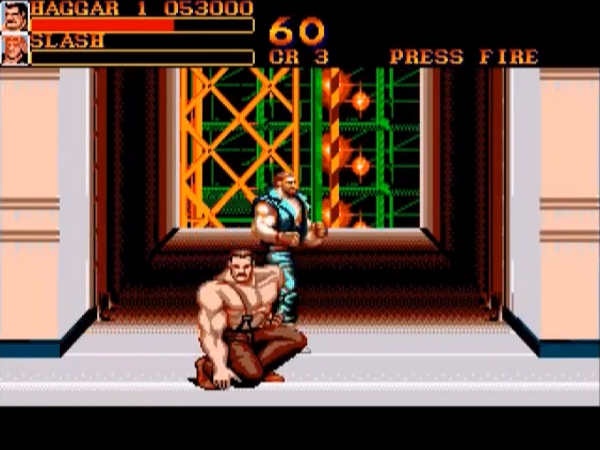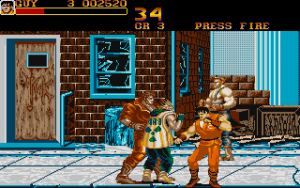
Street Fighter had become Capcom's second best-selling franchise behind Mega Man, with Street Fighter II being among the most successful and highest-grossing video games of all time when considering both its arcade and home versions. Street Fighter II: Champion Edition made four previously boss-exclusive characters playable and added "mirror matches" (the capacity for two players to fight as the same character with different color palettes) Street Fighter II Turbo: Hyper Fighting featured faster-playing speeds Super Street Fighter II reverted the speed change, added more characters, and featured a new scoring system which kept track of combos, as well as an eight-player single-elimination tournament mode and Super Street Fighter II Turbo allowed the gameplay speed to be adjusted, featured combos that could be performed in the air, and introduced more powerful "Super Combos" that could only be performed under certain conditions.
#Final fight streetwise multiplayer series#
Following this, Capcom enacted a long series of updated re-releases of the game over the course of several years, adding various improvements and new features in response to a wave of bootleg ROM chip upgrades that emerged for its arcade cabinets. Many of the innovations brought about by Street Fighter II were incorporated into later fighting games - including the Super Smash Bros. Street Fighter II added the concept of a roster of selectable playable characters, each with their own distinct fighting style and special moves, to the formula of the first game, as well competitive multiplayer combat between two players and a combo system - the first fighting game ever to use one, despite coming about as a bug initially.
#Final fight streetwise multiplayer software#
The Super NES port of Street Fighter II - the first 16-Megabit cartridge for the console - became Capcom's best-selling single-consumer game software until 2013, when it was surpassed by Resident Evil 5. It was met with meteoric commercial and critical success and is credited with both setting off a renaissance for the arcade game industry in the early 1990s and giving rise to an influx of fighting game franchises by other developers, popularizing the genre. Despite this change in direction, Capcom decided to make fighting games a priority after Final Fight was commercially successful in the United States, and went ahead with Street Fighter II, which saw release in 1991. The game received fair critical reception for relevantly innovating on its genre, but failed to garner lasting popularity, and would primarily derive its public appeal from being a historical curiosity in the wake of far more successful endeavors by the series.Ĭapcom had intended to lift Street Fighter's concept and improve on it with a sequel, but repurposed their follow-up project as a side-scrolling beat-em-up titled Final Fight in response to the popularity of Technōs Japan's Double Dragon.

In the game's limited 2-player mode, the second player takes control of Ken Masters, Ryu's friendly rival who is otherwise a functionally identical clone of Ryu in-game, and whichever player wins a multiplayer match between the two will proceed with the rest of the single-player game as that character. The game itself is a primarily single-player affair in which the only character that can be played is the martial artist Ryu, who must defeat a linear series of computer-controlled opponents at martial arts venues across the world. Though the one-on-one fighting game genre had already been first popularized years earlier by Karate Champ in 1984, Street Fighter is credited with introducing hidden, command-based special techniques to the budding genre's formula. In 1987, Capcom developed and released its first competitive fighting game, Street Fighter, for arcade machines, and subsequently ported it to the TurboGrafx-CD console under the title " Fighting Street" in 1988. 4 Media with elements appearing in the Super Smash Bros.It stars a multitude of characters whose sights are set on their life goals and to be crowned the greatest warrior on Earth - as is the case with its main stars Ryu and Ken Masters.

Street Fighter has three confirmed series sharing its universe, Final Fight, Rival School and Slam Masters, while Captain Commando, Strider, and Red Earth are in question, due to their possible connection within this shared universe. Originating in the arcade in 1987, the series became world-renowned as one of Capcom's most lucrative franchises, alongside Mega Man. series' collection of characters and properties that hail from the famous fighting game franchise created by Capcom. The Street Fighter universe ( ストリートファイター, Street Fighter) refers to the Super Smash Bros. Street Fighter V: Champion Edition (2020)


 0 kommentar(er)
0 kommentar(er)
